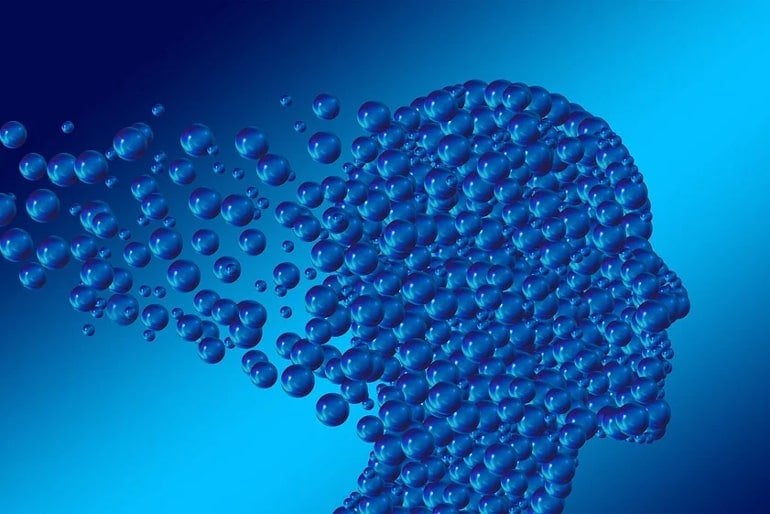Summary: A new study found altered cortical and subcortical networks in those with schizophrenia and their unaffected first-degree relatives. Findings suggest brain regions associated with a genetic predisposition to schizophrenia are partly separated from brain regions implicating neural abnormalities.
Source: Chinese Academy of Science
Schizophrenia is a highly inheritable brain disorder. Previous studies have proved that neurological soft signs (NSS) are strongly associated with the cortical-subcortical-cerebellum circuit, the main source responsible for the clinical and behavioral manifestations observed in patients with schizophrenia.
However, it is not clear whether a similar altered brain structural connectivity and association with NSS appear in patients with schizophrenia and their unaffected first-degree relatives.
Dr. Raymond Chan from the Institute of Psychology of the Chinese Academy of Sciences and his international collaborators have investigated the association of NSS with brain structural network in a group of 62 patients with first-episode schizophrenia, 25 unaffected first-degree relatives, and 60 healthy controls.
Their study was published in Schizophrenia Research on Dec. 4.
All the participants went through a structural brain scan inside a 3T brain scanner and then accepted a set of NSS assessment with the use of the abridged version of Cambridge Neurological Inventory.
Dr. Chan’s team adopted the source-based morphometry (SBM) analysis to identify NSS related structural networks in patients with schizophrenia, unaffected first-degree relatives and healthy controls.

Their findings showed that two networks, one involving the superior temporal gyrus, inferior frontal gyrus and insular network, and the other involving the parahippocampal gyrus, fusiform, thalamus and insular network, showed significantly gray matter volume reductions in patients with schizophrenia compared to unaffected first-degree relatives and healthy controls.
Interestingly, there were distinct NSS-related gray matter covarying patterns observed in patients with schizophrenia, unaffected first-degree relatives and healthy controls.
In patients with schizophrenia, NSS were associated negatively with the hippocampus, caudate and thalamus network and the superior temporal gyrus, inferior frontal gyrus and insular network. In unaffected first-degree relatives NSS were associated negatively with the caudate, superior and middle frontal cortices network. In healthy controls, NSS were negatively correlated with the hippocampus, caudate and thalamus network.
These findings not only support the altered cortical and subcortical network in schizophrenia and unaffected first-degree relatives, but also their partly different NSS-related gray matter covarying patterns.
The study also suggests that brain regions implicating genetic liability to schizophrenia are partly separated from brain regions implicating neural abnormality.
About this schizophrenia research news
Author: Press Office
Source: Chinese Academy of Science
Contact: Press Office – Chinese Academy of Science
Image: The image is in the public domain
Original Research: Open access.
“Structural network alterations and their association with neurological soft signs in schizophrenia: Evidence from clinical patients and unaffected siblings” by Li Kong et al. Schizophrenia Research
Abstract
Structural network alterations and their association with neurological soft signs in schizophrenia: Evidence from clinical patients and unaffected siblings
Background
Grey matter abnormalities and neurological soft signs (NSS) have been found in schizophrenia patients and their unaffected relatives. Evidence suggested that NSS are associated with grey matter morphometrical alterations in multiple regions in schizophrenia. However, the association between NSS and structural abnormalities at network level remains largely unexplored, especially in the schizophrenia and unaffected siblings.
Method
We used source-based morphometry (SBM) to examine the association of structural brain network characteristics with NSS in 62 schizophrenia patients, 25 unaffected siblings, and 60 healthy controls.
Results
Two components, namely the IC-5 (superior temporal gyrus, inferior frontal gyrus and insula network) and the IC-10 (parahippocampal gyrus, fusiform, thalamus and insula network) showed significant grey matter reductions in schizophrenia patients compared to healthy controls and unaffected siblings. Further association analysis demonstrated separate NSS-related grey matter covarying patterns in schizophrenia, unaffected siblings and healthy controls. Specifically, NSS were negatively associated with IC-1 (hippocampus, caudate and thalamus network) and IC-5 in schizophrenia, but with IC-3 (caudate, superior and middle frontal cortices network) in unaffected siblings and with IC-5 in healthy controls.
Conclusion
Our results confirmed the key cortical and subcortical network abnormalities and NSS-related grey matter covarying patterns in the schizophrenia and unaffected siblings. Our findings suggest that brain regions implicating genetic liability to schizophrenia are partly separated from brain regions implicating neural abnormalities.






